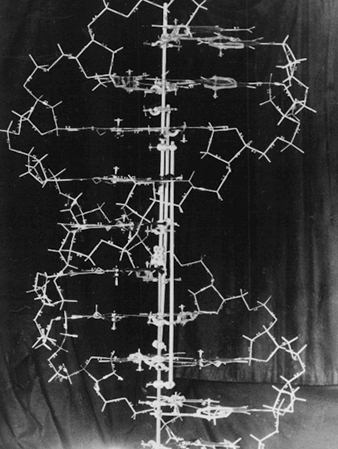For thousands
of years,
humans have acted as agents of genetic selection, by breeding offspring
with desired traits. All our domesticated animals (dogs, horses,
cattle)
and food crops (wheat, corn) are the result.
Yet for
most of this
time, humans had no idea how traits were inherited. Why?
Offspring
resemble
parents (or don't) in bewilderingly complex ways. That is because
individuals in nature contain many genes,
and many different versions (alleles)
of each gene. Consider these three individual orchids:
Orchid
Photos
-
What
happens when you breed them? Try it out -- Orchid
cross. (To cross, click on one of the orchids.)
In
1866, Gregor Mendel discovered independent assortment of
traits,
dominant and recessive expression. Traits appear in pairs; separate
independently
in the gametes; recombine in pairs, in offspring. (Today we know Mendel
only studied unlinked traits: on separate chromosomes, or so far apart
that crossover frequency approached 50%).
But
Mendel's work was
lost. Only in the past century did humans learn the fundamental
mechanisms
of heredity:
How and why
organisms
resemble their parents; and how the inherited information functions to
make organisms look and behave as they do.
| 1902
-- Walter Sutton and Theodore Boveri, using dyes synthesized
by the German organic chemistry industry, observed that "colored
bodies"
in cells behaved in ways parallel to the hypothetical agents of
heredity
proposed by Mendel. These bodies were called chromosomes.
1905
-- Nettie Stevens observed in Tenebrio beetles that
all
pairs of homologous chromosomes are the same size, except for one pair
which determines sex -- X, Y.
1909
-- Thomas H. Morgan correlates the X chromosome with
sex-linked
inheritance of the white eye trait in
Drosophila -- a strain of
flies discovered by an undergraduate lab assistant, cleaning out old
bottles
of flies in Morgan's lab. Morgan went on to make many important
discoveries
in fly genetics and linkage analysis that apply to all diploid
organisms.
1941
-- Beadle and Tatum determined in Neurospora that each gene
encodes one product (protein). (Later, we learned that RNA can be a
product,
not always transcribed to protein; for example, a ribosomal RNA.)
1944
-- Oswald Avery identified DNA as the genetic material.
Pieces
of DNA can transfer genes into bacteria cells, and transform them
genetically.
|
 |
953
-- Rosalind Franklin and Maurice Wilkins showed
that DNA is a double helix.
Thomas
Watson and Frances Crick determined the structure of the base
pairs
which enable replication producing two identical daughter helices.
1961
-- Jacob and Monod figured out regulation of the lac operon.
1960's
-- Barbara McClintockdiscovered transposable elements in corn;
later
found in bacteria and animals.
1970
-- Temin and Balitimore discovered reverse transcriptase in
retroviruses;
an enzyme later used to clone genes based on the RNA encoding the
product.
1977
-- Maxam, Gilbert, Sanger, others -- developed methods to
sequence
DNA.
|
1981
--
The first transgenic mammals were made.
1987
-- Kary Mullis invented the polymerase chain reaction (PCR),
using
a thermostable enzyme from a thermophilic bacterium discovered by
Thomas
Brock at a geyser in Yellowstone. Mullis sold the process to a
pharmaceutical
company, and earned very little. Brock didn't earn a cent.
1995
--
The first bacterial genome sequence, Haemophilus
influenzae,
was completely determined.
1996
-- Ian Wilmut
cloned the lamb Dolly
from adult mammary gland tissue.
2000
--Completion of the human genome
2010
-- Whole organs grown in culture?
2020
-- Chimp/human hybrids demand human rights?
2050
-- Self-aware computers demand human
rights?
|

